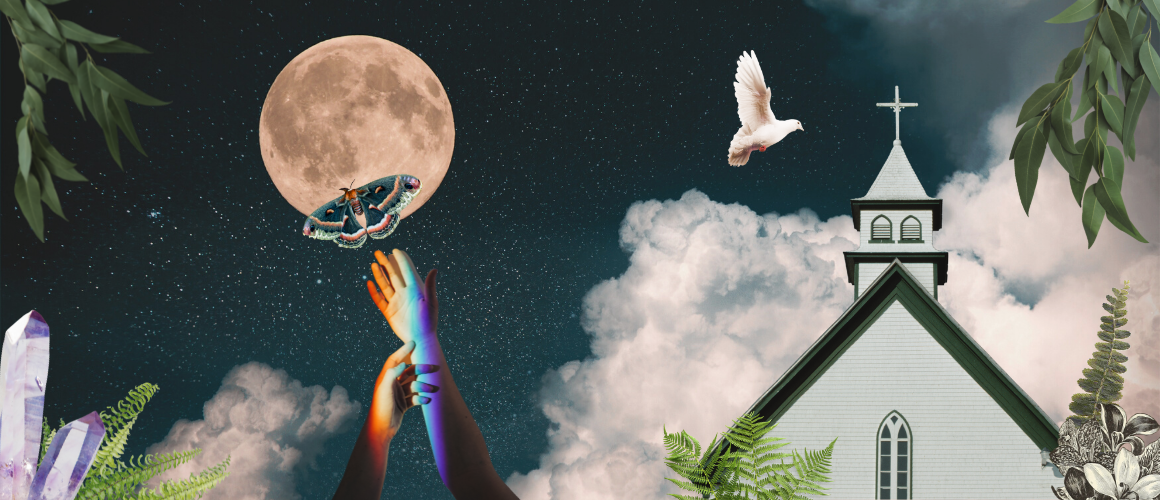Content warning: this piece contains mention of homophobia, mental illness, and implications of self-harm
Listen to the story here:
I had a secret.
It was cement slabs chained to my ankles. It was perverse bat wings fluttering from my back. I walked into that Lutheran church with my parents every Sunday and felt eyeballs follow me as I waded past rows of wooden pews. I thought everyone could tell something about me was different.
I never sang the hymns. I mouthed the words.

Gothic Girls
Gothic fiction is eerie, uncanny, and in my opinion, inherently feminist and queer. The genre is romantic horror, which means any wedding bells you hear are likely also funeral bells. Gothic fiction appeared on the European literary scene in the latter half of the 1700s and flourished through the 19th and 20th centuries.
A few key tropes help identify gothic horror stories:
- A foreboding setting (castles, moors, attics, haunted houses, etc.)
- A villain and/or antihero
- Paranormal/supernatural
- Omens and/or curses
- Thunder and lightning
- Psychological distress
- Discussion of morality, philosophy, and religion
- Emotional distress
- Vulnerable women (are we at all shocked?)
- Eurocentrism (again, not even a little shocked)
- Creatures and monsters (vampires, ghouls, shadowy figures, etc.)
Let’s look at a classic example of gothic horror. Mary Shelley’s 1818 novel Frankenstein not only tells us about the consequences of reanimating the dead, but it also shows us women’s lack of power in society and the mistreatment of bodies that differ from social norms.
The women in Frankenstein are constantly in emotional distress and meet tragic ends (caused by the antihero, Victor Frankenstein). The Creature (the reanimated corpse-menagerie Victor creates) is also constantly in emotional and psychological distress because his body doesn’t meet society’s standards. This gothic horror has a deeper meaning (underneath its story): if your body is not male, or society’s “ideal” version of male, society sees you as having little power, agency, and humanity.
“Horror as a genre is ripe for feminist examination because gender, sexuality, and fears related to the human body are often at the heart of horror,” former Bitch Media editor Dahlia Balcazar writes in a 2016 article about Halloween horror flicks.
Gothic horror relies on two types of bodies that men fear: women and monsters.

Little Lutherans
My brother and I are in the church basement shrieking in whispers and sprinting on cloud-soft feet, so the adults upstairs don’t hear us. The small closet at the end of the narrow hallway beckons our curiosity.
The closet is dark and feels haunted — so clearly, it’s the best part of the church. It’s stuffed chaotically with acolyte candlesticks, extra gowns, 30-year-old Christmas decorations, dusty chairs, and seasonal Lutheran altar dressings. The doorknob locks from the outside, and my brother and I take turns being “trapped” in the closet. It brings that horror-movie thrill to my stomach that I will crave when I’m older.
Directly across the hall from the closet is a dark and almost-hidden back staircase leading up to the front of the church. We climb the steps like two baby cubs sniffing for mischief and poke our heads around the stairwell. We snoop behind the pastor’s pulpit and click every lighter in a small desk drawer. We know God can see us, but no one else can.

“Witches have always been women who dared to be: groovy, courageous, aggressive, intelligent, nonconformist, explorative, curious, independent, sexually liberated, revolutionary.”
Kristen J. Sollée
Witches, Sluts, Feminists: Conjuring the Sex Positive
I wish I’d found the witch in me sooner.

Out of the Attic
Katharine Hawkins is a Sydney professor with a PhD in Feminist Monster Theory. Hawkins has a specific interest in feminist and queer readings of gothic genres, and in 2019 she published an article called “Monsters in the Attic: Women’s Rage and the Gothic.”
Hawkins says, “[t]he notion of men’s comfort is important within discussions of women’s anger – not only within the Gothic but within a broader context of gendered power and privileged experience.” In a patriarchal society, women’s anger is like a monster. If women are unhappy being complacent, it threatens men’s power dominance.
Men don’t deserve to be comfortable.
Hawkins also talks about the literal woman in the attic in Charlotte Perkins Gilman’s 1872 gothic classic “The Yellow Wallpaper” and how unmanageable it is for women to meet society’s standards and keep men comfortable. Hawkins explains society expects women to be chaste, maternal, and sexually alluring all at once.
Written in the form of journal entries, Gilman’s narrator in “The Yellow Wallpaper” brings readers into her isolated life as a wife and new mother struggling with her mental health. Yet, frustratingly, the narrator’s husband, (John), repeatedly ignores and overlooks her distress.
Monsters live in this story, too — stuffed into the shadows and behind the wallpaper. A swallowed rage raring to escape.
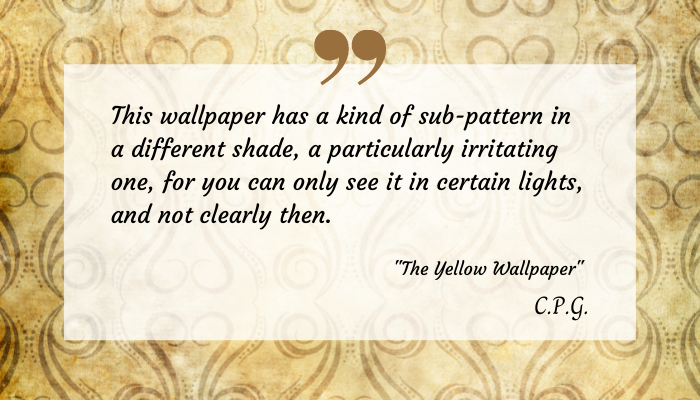
Queer Magic
*Amy identifies as queer and uses she/her pronouns
It’s November 2021. The sky, ground, and strangers in the distance are all grey. Amy and I sit at one of the few round picnic tables outside the University of Winnipeg’s Riddell Hall. We face the hall’s wall-to-ceiling greenhouse-like windows.
The last beams of 3 p.m. sun lick our legs deliciously as we sip boba. Soon the rays will be sulking off into the grey.
Amy and I agree we have known each other in our past lives. We’ve been best friends for over ten years and have been mistaken for sisters (and sometimes a couple) more times than we can count.
“You didn’t identify as bisexual or queer until… when was it? 21, 22?” I ask.
“Right,” Amy answers. “I started university when I was 21, which means I was 20 when I told you. So, I’ve been out to you the longest.”
Pigeons coo on Riddell Hall’s roof – a fluttering silver audience nestled in the rafters.
Amy shudders from the chill and stuffs her hands into her fluffy sherpa coat. Strands of her soft brown hair keep getting caught in her round glasses. She’s like an academia fairy with her freckles, glittering amber eye makeup, and plaid dress.
You can ask Amy anything about queer theory, gender, or feminism, and she’s got the answers.
“And when did you first realize you were queer?” I ask. “Because for me – that started happening way before I came out.”
“I don’t know,” Amy says, searching for her next words. “At the time, I don’t think I recognized it quite as queerness, you know? But I think that’s common for a lot of people.”

Celibate, Sinful, & Sorry
The Social Issues page on the Lutheran Church-Canada (LCC) website shows an image of a Pride flag. Under this are the lines:
“Homosexuality is sinful. God’s redeeming love of Christ is offered to all through repentance and faith in Christ. A ministry of healing and restoration is needed.”
Links to two “Resolutions” documents sit below this text. Resolutions are official LCC theological documents used to provide guidance to the church. Two specific Resolutions outline how ministries should handle homosexuality.
These are a few points from Resolution 93.1.05:
- People who are homosexual should “live full lives to the glory of God in a context of sexual celibacy.”
- “The homosexual” should be confronted with their “sinfulness” and repent to Christ.
- The church should help those who are homosexual “to rely on Christ’s love and the power of the Holy Spirit to abstain from homophile behaviour.”
The message is you can be queer, but you must be celibate, sinful, and sorry.
If you were queer and went to a Lutheran church, would you come out? Would you even be able to recognize your queerness?
…Asking for a friend.

As Above, So Below
What’s dealt to us, we’ll return threefold.
“I think women are uniquely qualified to write about horror because almost all women are told from childhood that the world is a dangerous place for them.”
Kirsty Logan
Author of Things We Say in the Dark
This quote from award-winning 2SLGBTQ+ author, Kirsty Logan, appears in an article on Penguin Books’ UK site. Alice Vincent, the features editor of Penguin.co.uk and author of the article, sees a connection between horror and feminism and why the gothic genre seems to be getting a contemporary revamp (pun intended).
Along with gothic horror, witchcraft has recently gained traction with feminists. Francine Toon’s debut novel Pine (2020) is a modern gothic thriller with nods to witchcraft. “As well as a conduit for pain, defiance and female power, the witch is also a healing figure,” Toon writes for Penguin UK. “In recent years, witches and their covens have been reclaimed to express a spiritual side of feminism, one that feels more comfortable with the maiden, the mother and the crone rather than the father, the son and the holy spirit.”
American journalist Bianca Bosker noticed the recent influx of witches in Western society and wrote an article for The Atlantic called “Why Witchcraft is on the Rise.” In it, Bosker points out folks in marginalized groups lack control in society and uses the COVID-19 pandemic as a recent example. Bosker also says witchcraft might be a way for folks to “tap into unseen, unconventional sources of power” that the patriarchy keeps from them.
“Witchcraft beckons with the promise of a spirituality that is self-determined, antipatriarchal, and flexible enough to incorporate varied cultural traditions,” Bosker says.
Feminism is raging, and the witch is rising.

The Acolyte
When I’m 13, I climb the almost-hidden back staircase in the church’s basement wearing a musty white acolyte robe.
I light my candlestick with one of the lighters kept in the small desk drawer. It takes a few good clicks before I get a flame to spark. Behind the pulpit, no one can see me except God – if he exists.
I step up to the altar and light the tall candles. My back is to the congregation, filling the hazel-coloured pews as the organ sends shrill harmonics to the high ceiling. I’m sweating under my robe’s thick polyester fabric. It drags on the ground as I walk across the alter. An adult man would fit it better than me.
I hope they don’t see my hands shaking. My intrusive thoughts are blaring:
Blow out your flame.
Blow out your flame.
Blow out your flame.

Queer Magic (II)
“Hilary Duff was probably the first girl I was attracted to,” Amy says. “The affection I had for Hilary Duff was very different than the affection I had for other female artists.”
The way eight-year-old Amy felt about Hilary Duff was how eight-year-old me felt about Sarah Michelle Gellar. Like Amy, I didn’t realize my childhood celebrity infatuation was queer until I got older.
When I was eight, I carried around a picture of Sarah Michelle Gellar in my coat pocket to help me feel safe and less anxious. (For reference, it was the movie-poster image for the 2002 live-action Scooby-Doo, which I’d ripped out of a magazine.)
“That’s pretty witchcrafty,” Amy says after I tell her about the crumbled magazine page I treasured as a kid. “Think about it, you’re giving this item power to comfort you, and therefore, that’s like a form of magic,” Amy says. “Just kind of interesting that you would do that.”
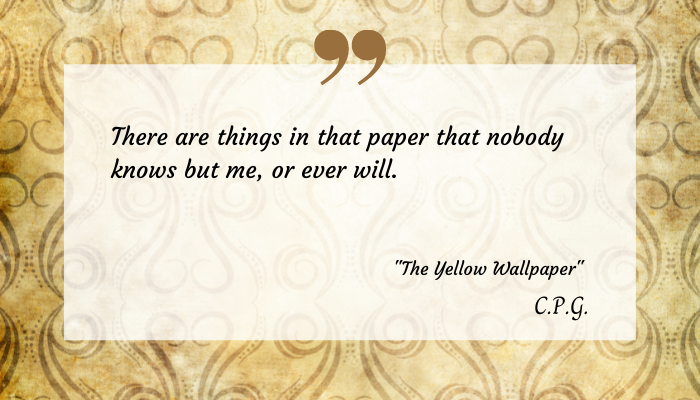
Season of the Witch
I carve a heart into a rose-scented pink tealight using a toothpick and place it on top of a penny.
It’s November 2018 — a year of bad dates and heartaches. I’ve been reading about witchcraft online and even have a book on my bookshelf called Wiccapedia. I often pick up creative hobbies and never fully braid them into my life. Watercolour, sewing, baking, building miniature greenhouses — these are the kinds of things I love, but my low energy (caused by my anti-depressants) makes it hard to keep up with them.
This time would be different.
I rip a small piece of paper out of a notebook and write: “I am worthy of love.” I roll it up and place it next to the candle on its penny. I am home alone, and the house feels safe. I light the candle and stare at it, waiting. I watch smoke plume and spurt, trying my hardest to believe. This is my first spell.
Once I feel my intention fully sink in, I blow out the flame.
I guess that’s when I became a witch.

Reclaiming the Monsters
Like witchcraft, gothic horror allows marginalized folks to reclaim power and magnify their voice.
Queerness has always had a place in gothic horror, although 18th and 19th-century stories often contained queer nuances.
“Gothic literature has long been a foothold for the exploration of sexuality and has contributed to the way we think and write about queerness and not always for the good,” says Kalynn Bayron in a tor.com article.
Though critical of society, gothic stories usually frame homosexuality as a villainous or monstrous trait. Modern writers are remaking gothic horror but “this time with a focus on characters from historically marginalized and excluded backgrounds,” Bayron says.
Gothic horror is a reclaimed language.

It’s Not Easy to Leave
American author and activist Glennon Doyle believes in “The God of the Bathroom Floor.”
“The God of the Bathroom Floor” is a god who entirely accepts you for who you are and encourages you to get back up after you’ve fallen. It’s a god who doesn’t judge, no matter how hard you hit the floor.
Doyle hosts a podcast called We Can Do Hard Things. On an episode called, “QUEER FREEDOM: how can we be both held and free?” Doyle, her wife, and her sister discuss their experiences with Christianity and queer identity.
They repeatedly mention “false shame” and internalized homophobia. “Queer people who grow up in non-affirming religious institutions – they’re given a very bad set of options,” Doyle’s sister Amanda says at one point in the episode. “Either stay there and swallow this and continue to internalize and internalize homophobia, or leave it – leave this religion, leave this spirituality.”
Amanda also says the longer queer folks stay in non-affirming churches, the more internalized homophobia and mental health consequences they have.
Doyle thinks the Bible’s version of Jesus and the church’s version of Jesus are two very different people. She prefers the Bible-Jesus because he walks around asking, “who is religion forgetting, and who is power oppressing?” Church-Jesus just throws stones.

Queer Magic (III)
Amy says her church’s basement used to be beautiful.
Handprints, big and small, and in every colour of the rainbow covered the basement’s cement walls. Amy’s tiny handprint was blue. Or maybe purple. She can’t remember exactly.
A rainbow arched across one wall.
“A big, Jesus-rainbow,” Amy says. “It had a cross painted in the centre of it.”
“Was your church affirming all through your childhood?” I ask.
“No…it’s so stupid,” Amy answers. “We had to vote on whether we were going to be welcoming or not. And that’s really – for lack of a better term – a fucked-up thing.”
Amy was around 12 when her church held this vote during their annual member meeting and cake auction. Rows and rows of colourful cakes, rich and sweet, were lined up on tables in the church’s basement. This vote would decide if the church would welcome and support the 2SLGBTQ+ community.
“The big rainbow wasn’t there anymore the year we voted,” Amy says. “Which is funny to me.”
Some folks came for the cake but ended up showing their not-so-sweet sides.
“Were there folks who were really against becoming affirming?” I ask.
“There was a family at this meeting who had a child in the closet, and they were one of the biggest advocates for not becoming an affirming church,” Amy says. “They thought homosexuality was against God.”
“Do they still go to your church?”
“Oh, they still go,” Amy replies. “They’re very different people now.”
“Unlearning and relearning,” I say.
“Exactly.”
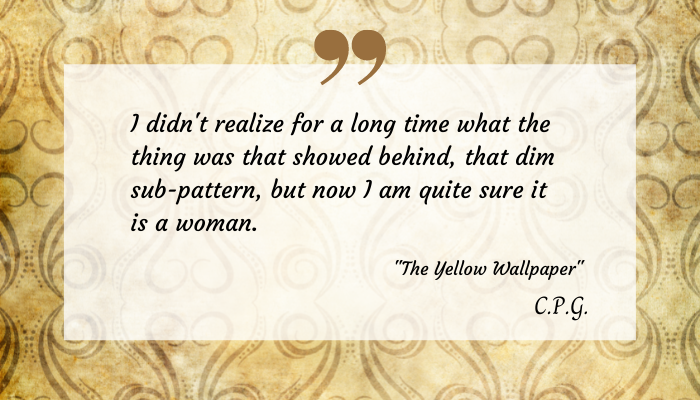
Who is Religion Forgetting?
The United Church of Canada makes up the country’s largest Protestant denomination, with more than two million followers in over 3,000 congregations. Groups within the United Church have been supporting folks in the 2SLGBTQ+ community since the 1970s, and Augustine United Church in Winnipeg became the first affirming congregation on February 26, 1995.
Manitoba now has 30 affirming United Churches, including the church Amy attends with her family. Aside from the United Church, there are also affirming Anglican and Mennonite congregations.
There are no affirming Lutheran churches.
The United Church of Canada’s website also displays an image of the Pride flag. The words underneath it say:
“We affirm that gender and sexuality are gifts of God and welcome people of all sexual orientations and gender identities.”
This paragraph is also on the website:
“Even as we seek to eliminate sexism, misogyny, homophobia, biphobia, and transphobia, we know that we, too, are guilty of these forms of oppression. We acknowledge the roles that Christianity and religion in general play in such oppression.”
The United Church of Canada acknowledges Christianity’s role in oppressing marginalized groups. Accordingly, this website also includes the United Church’s acknowledgement of its contribution to the oppression and assimilation of Indigenous Peoples.
The United Church seems to be asking: “who is religion forgetting, and who is power oppressing?”

Crimson & Clover
Over & Over
When I’m 14, I stop believing in God.
I’m sitting in confirmation class beside the pastor in his office, and he’s reviewing Samson and Delilah’s story with the handful of 13 and 14-year-olds in the room. I’m tired of men’s plot lines. Delilah is strong, but we only talk about what she took from God’s chosen one. Imagine what the Bible would be like if women wrote the stories.
Despite my belief fading, I keep praying. A part of me fears the consequences of letting go. Around this age, my true self starts kicking to get out, but I won’t let her escape. Instead, I continue to pray:
Dear God, please make these feelings stop. Amen.
Dear God, I don’t want to be different. Amen.
Dear God, please let me die before I wake up. I’m so tired. Amen.
I’m 16 and curled up on the basement couch watching another Stephen King movie. I stay home sick a lot: stomach aches, nausea, headaches, fevers.
I’m afraid of what I’ll feel if I see a pretty girl in the school halls.
I distract myself by watching creepy movies. My favourite is anything King. The Shining, Cujo, IT, Pet Sematary, The Mist, Carrie.
Everyone in these films is trapped by something, just like me.
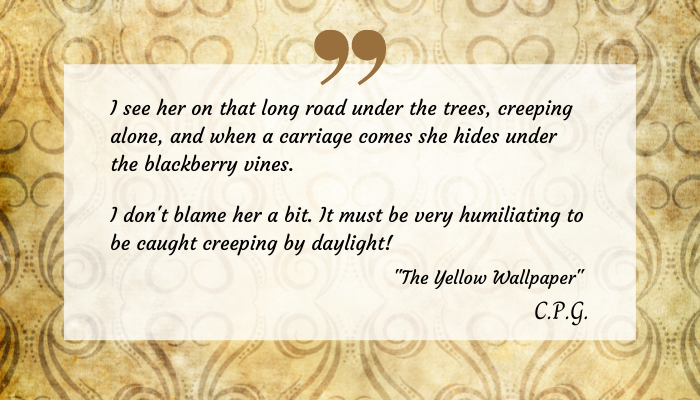
Queer Magic (IV)
“There was a time where my church wasn’t accepting of everybody, and that’s something I think was both a good and bad experience for me as a queer kid,” Amy says. “I would think, oh shit. These people think I’m going to hell. But then I’d think, oh shit. Some of these people don’t think I’m going to hell.”
Hell would be nice right now, I almost say. My nose is running from the cold. The sun has almost completely dissolved into grey.
Neither Amy nor I believe in hell — well, the Christian version. We believe in something. Bisexual Jesus, maybe. We’ve both swapped out Bibles for tarot cards — gone from God to witchcraft.
Unlike me, Amy still goes to church, but she says she believes in community more than God. Amy loves her congregation’s community work and has participated in tons of activism through the United Church. In 2018, she even went to South Korea and led a presentation on current 2SLGBTQ+ social justice issues in Canada and why becoming an affirming church is essential.
“Witchcraft is like a liberation,” I say to Amy. We lift our frozen bodies from the picnic table, ready to get out of the cold. “Liberation from patriarchy, oppression, and Christianity.”
“Not only liberation from, but liberation within as well!” Amy exclaims. “Witchcraft is changing the way people view Christ and the Bible.”
Queer kids who grow up in non-affirming churches are magic creatures. Those of us who get out must unlearn shame and relearn acceptance. For me, unlearning shame came only after cutting out the church. It took years and is something I’m still working on.
Those of us who don’t get out are trapped as monsters in the stories.
I may have scar tissue and trust issues, but I found something so much better on the other side.
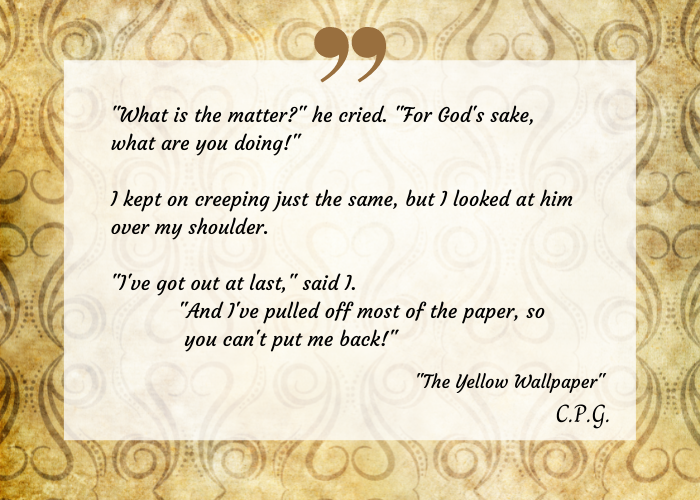
*All illustrations by Rachel Wilson
